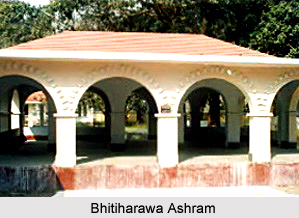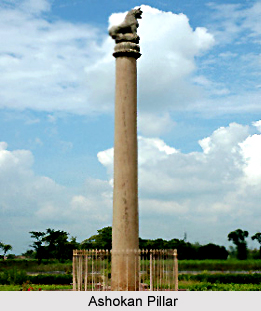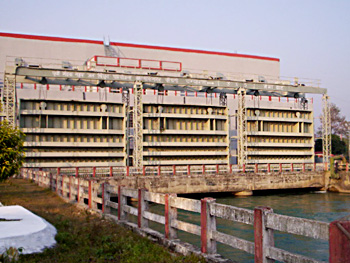 Tourism in West Champaran District is composed of several places of religious and historical interests. Tourism in West Champaran District comprises visits to various attractions like historical forts, archaeological remains and temples. People from all parts of the country come and explore the various tourism places offered by this district of Bihar. Some of the most popular tourist attractions of West Champaran District are as follows -
Tourism in West Champaran District is composed of several places of religious and historical interests. Tourism in West Champaran District comprises visits to various attractions like historical forts, archaeological remains and temples. People from all parts of the country come and explore the various tourism places offered by this district of Bihar. Some of the most popular tourist attractions of West Champaran District are as follows -
Pilgrimage Tourism in West Champaran District
Triveni Confluence: This place is in the north-western part of the district under Bagaha-II Block. Panchanand and Sonaha are attractive places to see. This place is at the Indo-Nepal border. One bank of this confluence touches Triveni village of Nepal while another bank extends to Bhaisa Lotan village of the district. The holy book "Srimad Bhagwat" describes that the thousand years battle between Gaj (Elephant) and Grah (Crocodile) was started at this place. Lord Vishnu appeared and protected the elephant. Every year a fair is held at this holy place on the eve of "Magha Sankranti" (Magha is the 11th month of the Hindu lunar calendar and `Sankranti` refers to the period of time when Sun enters into a new zodiac sign).
Bhitiharawa Ashram: It is a village in Gaunaha block from where Mahatma Gandhi started his freedom movement that came to be known as `Champaran Satyagraha` in India history.
 Leisure Tourism in West Champaran District
Leisure Tourism in West Champaran District
Bawangarhi: It means 52 forts. This name is given to the remains of some old fortifications near Darwabari in Bagaha-II block about 8 kms from Triveni. The place is also called Tripan Bazar. The remains of the 52 forts and 53 bazaars are at a short distance to the north of the village. To the north-west across the swamp are remains of massive embankments, which may perhaps have been intended to serve as reservoirs.
Sumeswar: A fort is situated on the summit of the Sumeswar hills, at a height of 2,884 feet above sea level, in Ramnagar block. The fort which stands on the edge of a sharp precipice is now in ruins, but its remains are well defined and reservoirs cut out of the solid rocks, in which water was stored for the use of the inhabitants, can still be seen. The ridge upon which Sumeswar Fort is situated offers a magnificent view of the snow and of the intervening valleys and low hills situated in Nepal. The ridge here forms the boundary between West Champaran and Nepal. The great Himalayan peaks of Dhaulagiri, Gosainthan and Gaurishanker are all clearly visible, and the view is said to be one of the finest views in the country.
Vrindavan: Situated at a distance of 10 kms from Bettiah, in Gaunaha Block, this village had the honour of being the venue of the annual conference of `All India Gandhi Seva Sangh` in 1937. It was attended by Mahatma Gandhi and Rajendra Prasad.
Nandangarh and Chankigarh: Nandangarh is situated in Lauria block while Chankigarh is situated in Narkatiaganj block. These are actually two big mounds, which are the remains of palaces of Nanda Dynasty.
Ashoka Pillars: About 1 km east of Nandangarh in Lauria block is the lion pillar of Ashoka, over 2300 years old and is in excellent condition. This pillar is 35 feet in height, its base diameter is 35 inches, and upper diameter is 22 inches. Its massiveness and exquisite finish furnish striking proof of the skill and resources of the masons of Ashokan age. Two more such pillars have been discovered in Rampurwa village, close to Gandhi`s Bhitiharawa Ashram in Gaunaha block.
Nature Tourism in West Champaran District
Valmikinagar: - Formally known as Bhainsa Lotan, it is a famous tourist spot where a dam is built on river Gandak known as Gandak Project. This dam and its channels are the lifeline of north-western part of Bihar. This channel also irrigates some portions of eastern Uttar Pradesh. This dam is also generating hydro-electricity. For those, who are interested in exploring natural beauty, a visit to the sylvan surroundings of Valmilkinagar is a must; where the gushing streams of Gandak break the ascetic calm of the Himalayan foothills. Bhainsa Lotan is also famous for Valmiki Ashram where Valmiki, the author of Ramayana, is said to have spent some years. Lord Shiva temple, constructed by Bettiah Raj and ancient Shiv-Parvati temple is also situated here.
 Bhiknatohari: A beauty spot located in Gaunaha block on the northern part of the district, is the last railway station on Narkatiaganj Bhiknathori section. Located in the midst of beautiful scenery, it gives a clear view of the snow capped Himalaya Mountains and the Annapurna peak in the winter.
Bhiknatohari: A beauty spot located in Gaunaha block on the northern part of the district, is the last railway station on Narkatiaganj Bhiknathori section. Located in the midst of beautiful scenery, it gives a clear view of the snow capped Himalaya Mountains and the Annapurna peak in the winter.
Saraiya Man: Situated at a distance of about 6 kms from Bettiah town, Saraiya Man is a lake which is a wonderful tourism spot. The lake attracts diverse varieties of birds.
These places of interest of West Champaran District are worth visiting as they offer a memorable travelling experience to the visitors.






